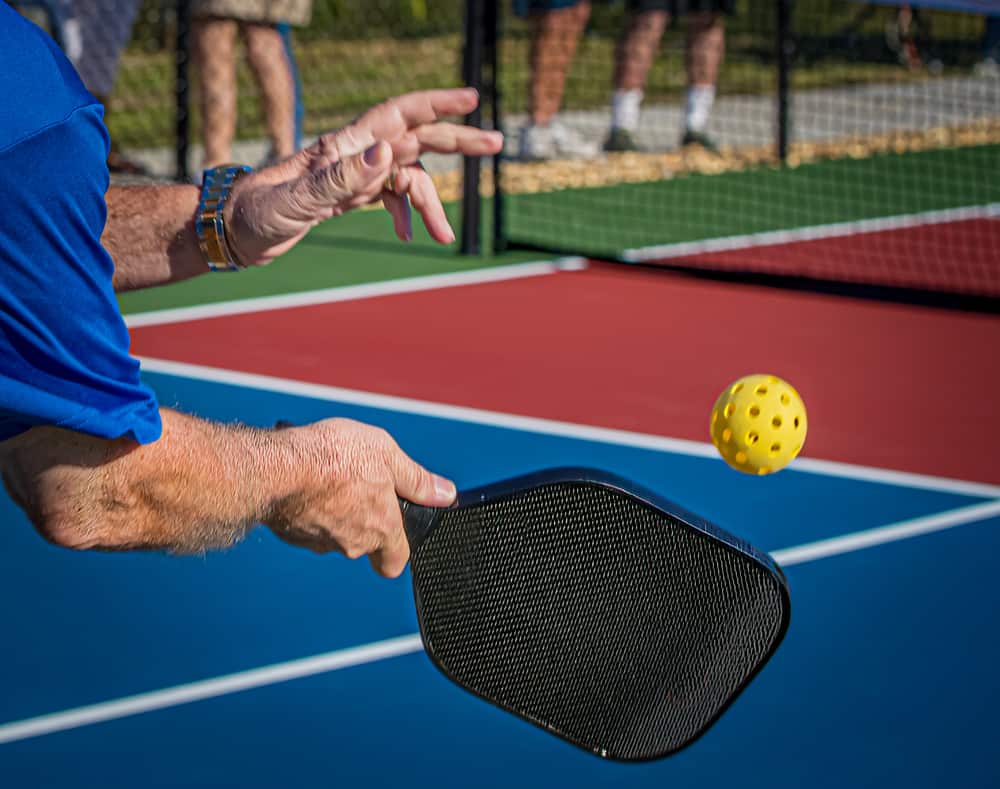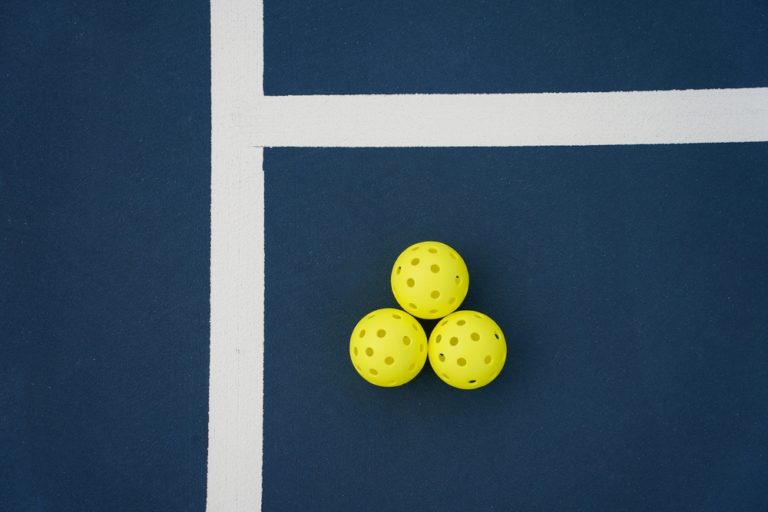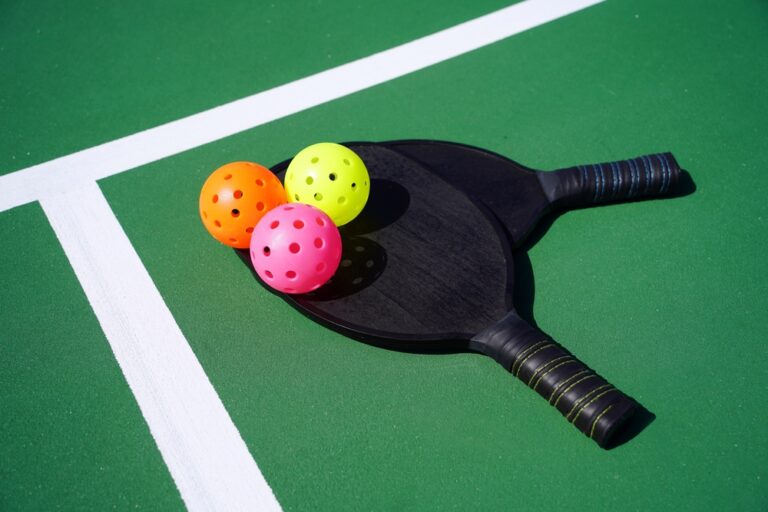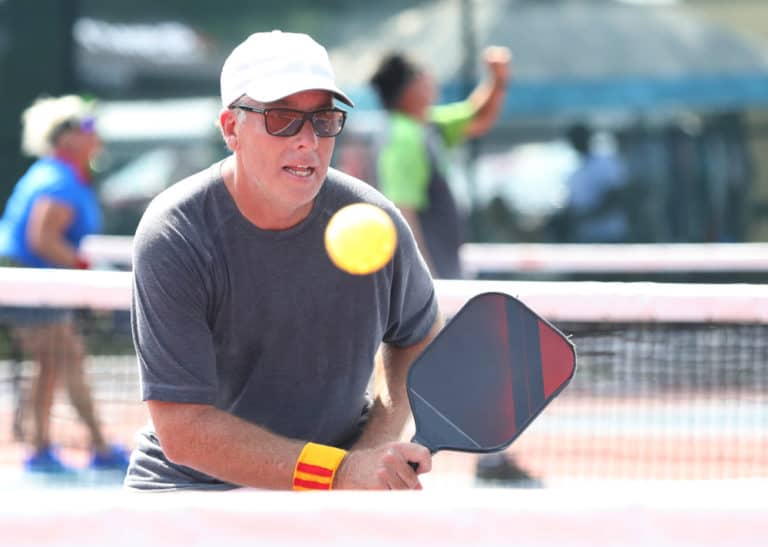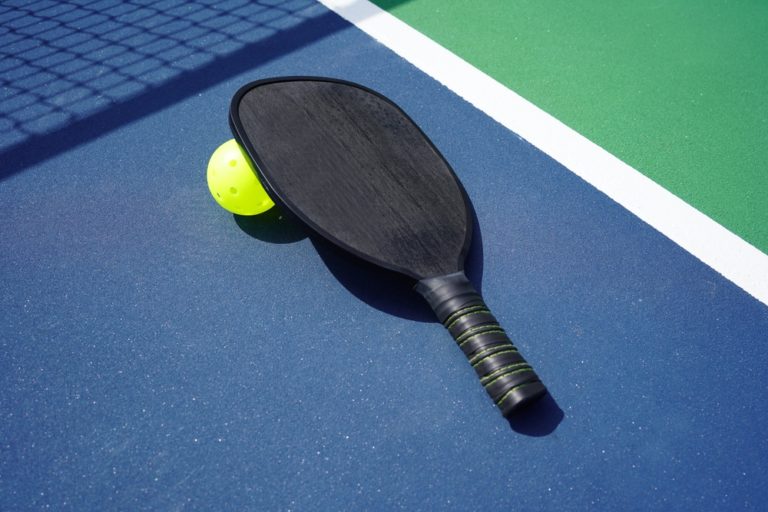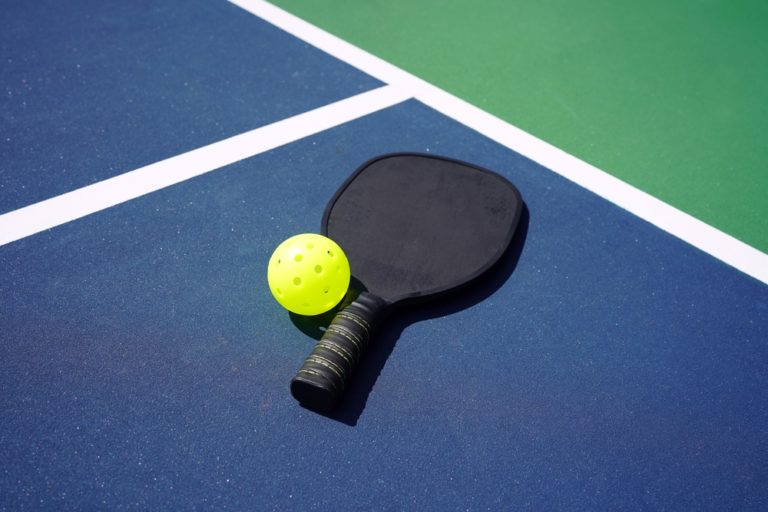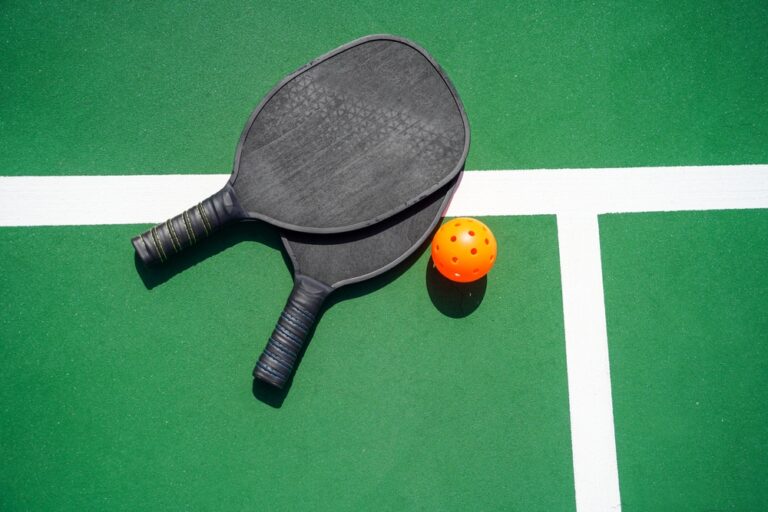When Should I Upgrade My Pickleball Paddle?
Pickleball is addictive, and once you have started playing more regularly, you may soon find that your starter equipment can’t keep up with your game. To become more competitive, it may be time to upgrade, or there may be specific elements that need to be addressed. Upgrading your pickleball paddle can make a world of difference or simply be the confidence booster you need to deliver your A-game.
Pickleball paddles usually last at least a year. Upgrading can boost performance and be a confidence booster. Reasons players should upgrade their pickleball paddles:
- Move up a level
- The grip is too big
- Dead spots
- Too heavy
- Change shape
- Too loud
- Worn out or broken
- Gain confidence
Don’t let your paddle hold back your game. There are plenty of options, and you should upgrade your pickleball paddle whenever you feel like it is no longer a good match for your game. Of course, there are some sure signs you need to upgrade, which we will go through below.
When Should I Upgrade My Pickleball Paddle?
Pickleball paddles range in cost from $30 to over $200. No two players are alike, and like any piece of sporting equipment, each has features that make them the best choice for specific players.
Fortunately, pickleball equipment is relatively inexpensive compared to many other sports, which is part of the game’s appeal. There are more than forty companies that manufacture pickleball paddles, so there is plenty of choice for players thinking of upgrading their paddles.
Unless your paddle breaks spectacularly while doing a victory clunk with your teammate, chances are that the decline in the performance of your paddle may be gradual. Fortunately, most pickleball paddles are relatively tough, and recreational players can usually expect a lifespan of over a year.
There are eight reasons you should consider upgrading your pickleball paddle.
1. Upgrade To Move Up A Level
Like most sports, when you started, you probably used entry-level equipment. After all, you didn’t want to invest in items that you may only use occasionally!
Once you become hooked on pickleball, your ‘feel’ for the game will become more refined. When you started, you were probably more focused on simply connecting the paddle with the ball to return the shot!
As your game progresses, things like responsiveness, shot placement, balance, spin, and control become increasingly important. Pickleball paddles may all look similar to the novice eye, but they differ significantly in terms of design, performance, and of course, price.
This is not to say that you will instantly move from beginner to competitive player if you use an expensive paddle, but upgrading will give you an edge you didn’t have before. Of course, wielding a new, upgraded paddle may also give you the extra boost of confidence you need, which is sure to improve your game.
2. The Pickleball Paddle Grip Is Too Big
When you were new at the sport, you might not have been as keenly aware of the more subtle nuances of playing winning shots. You probably wanted a paddle that felt big and solid in your hand. Many new pickleballers also ‘inherit’ pre-loved incorrectly sized equipment from players who are upgrading.
When a pickleball paddle handle is slightly too thin to hold comfortably, a pickleball overgrip can be added to build the diameter. However, if the handle is too big, to begin with, there isn’t much you can do except use thinner grip tape, but it may still be too big for your hand.
The size of the paddle grip is a vital consideration when playing pickleball. If the grip is too big, it will feel like you are wielding a bulky shield that will strain your hand, wrist, and arm. If it is too thin, you may find yourself holding onto the handle too tightly, which will affect your game.
It is recommended that you upgrade your pickleball paddle as soon as possible if you realize that you chose a grip that is too large. Pickleball elbow is a condition you want to avoid at all costs, so if your paddle grip is too big, it is time to upgrade!
3. Upgrade Your Pickleball Paddle When It Gets Dead Spots
When the sweet spot on your pickleball paddle becomes a dead spot, it has reached the end of its lifespan. You will develop a feel for your paddle, and it will get a familiar feeling in your hand.
Over time the surface can develop slight dents and scratches that will result in less predictability of shots. You may also notice that the sound changes and becomes less hollow than before.
Players often get used to their reliable old paddles, and the decline in the performance of the paddle may be gradual. However, when you consistently notice the ball not moving as you expect, it may not be your shots, and it may very well be time to upgrade your pickleball paddle.
4. Upgrade If Your Pickleball Paddle Is Too Heavy
While the shape and grip size are essential considerations when choosing a pickleball paddle, many players rate weight as the overall most important factor. If your paddle is too light, you may battle to deliver power shots, but if it is too heavy, you could develop stress injuries, or it may feel bulky to maneuver.
Although you should upgrade your paddle anytime it feels like it is not the correct weight for your game, whether it is too light or too heavy, the danger of a paddle that is too heavy is that it will ultimately take a toll on your body. You will feel tired sooner when playing long matches, and joints like elbows and wrists will take more strain.
The weight of pickleball paddles depends greatly on what it is made from. Wood is still a popular, inexpensive choice, but it is the heaviest. Graphite paddles are the lightest but often the most expensive. Fortunately, players can now enjoy the best of both worlds and opt for composite paddles.
5. Upgrade Your Pickleball Paddle To Try Change Shape
According to the USA Pickleball Equipment Standards Manual, so long as the length of a paddle does not exceed 17 inches, and the total combined length and width isn’t more than 24 inches, it is perfectly legal. This means that pickleball paddle manufacturers have created slightly wider versions with shorter handles and maximum length models that have forfeited a bit of width.
Although shape differences may seem marginal, when combined with factors like overall weight and paddle thickness, players do develop preferences. Longer paddles provide more reach, while shorter ones increase the striking surface, and it can affect the player’s control of where the ball lands.
6. Change Your Pickleball Paddle If It Is Too Loud
Pickleball players love the pop-pop sound of a game in full swing. However, it can take a bit of getting used to for non-players or anyone who lives near busy pickleball courts.
Although some high-tech soundproofing solutions have been developed, one of the easiest steps for clubs to curb noise is to require the use of specific ‘quiet’ balls and paddles. Some clubs have lists of approved or green zone paddles that their members must use.
While changing your paddle to reduce noise may not be something your want to do, it may ensure that your courts are open more regularly without complaints. If you do need to change your paddle to comply with court regulations, it may be the perfect excuse to upgrade!
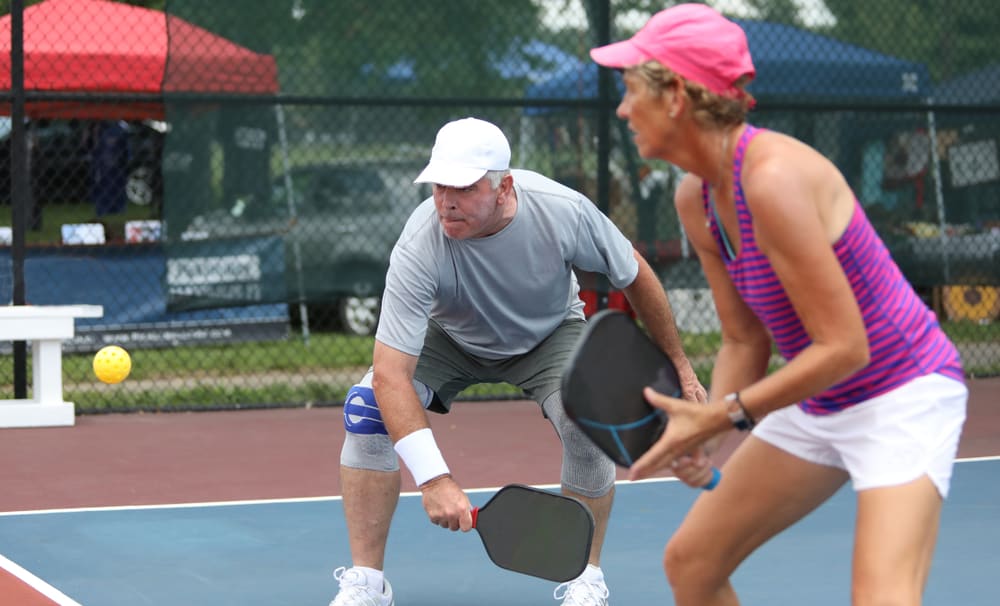
7. Upgrade When Your Pickleball Paddle Is Worn Out Or Broken
Paddles don’t last forever, and even the best cared-for equipment does eventually wear out. There are some things you can do to extend the lifespan of your pickleball paddle, but ultimately, it will need to be replaced.
There are a few ways to keep your pickleball paddle in good condition for as long as possible:
- Avoid storing it in places with extremes of temperature. Hot cars are notorious culprits that will reduce the life of your pickleball paddle.
- Keep your paddle in a protective bag when not in use. Some plastics are affected by UV light. On top of that, if your paddle is left out, it may get scratched or damaged.
- We know it’s hard, and you can get swept away in the moment, but try not to victory-clink your paddles too hard after a match!
- Never lean on your paddle while socializing. Paddleball is a very social sport, and it can be tempting to rest and chat using your paddle as support. Pressure on the handle can cause it to snap at the neck, and it will also damage the guard edge.
8. Upgrade Your Pickleball Paddle To Gain Confidence
There’s no doubt that there are significant differences in performance between starter and mid-level or professional paddles. Stepping onto the court with an upgraded paddle is a real confidence booster.
After you’ve read all the reviews and decided on your new paddle, you will likely play with new vigor and enthusiasm. Upgrading your pickleball paddle may give you the psychological boost you need to take your game to the next level.
Is A Thicker Pickleball Paddle Better?
There aren’t any restrictions on the weight or thickness of pickleball paddles. This means that manufacturers have been able to vary these two elements greatly in designs.
Thicker paddles mean more stability, but in early designs, this came with an increase in weight. The advent of polymer honeycomb core material has meant that recent designs can be light and significantly thicker than before.
There are two major reasons why some pickleball players prefer a thicker paddle:
- Stability – the paddle is less likely to twist while playing shots.
- Consistency of shots – Since the ball is hitting a thick surface, it is more likely to play equally well off a larger area of the paddle.
While a lot boils down to individual player preferences, thicker designs of pickleball paddles are quickly becoming popular. The only drawback is that thicker paddles make it trickier to scoop the ball off the court, which in any case, should be avoided as it may damage the surface of your paddle!
Is A Lighter Or A Heavier Pickleball Paddle Better?
When it’s time to upgrade your pickleball paddle, you may feel like you need to decide between maneuverability and power. Players must find the perfect balance between control and force that suits their specific strengths and style of play.
Beginner pickleball players who are getting used to the game should use a lighter paddle. If they have a more hard-hitting style and prefer playing from a bit further back, they may benefit from changing to a slightly heavier paddle. To start out, though, aim and control should be major considerations.
| Pros of Using a Lighter Paddle | Pros of Using A Heavier Paddle |
|---|---|
| Less strain on your joints | Suit players with an aggressive style of play |
| Easier to control the paddle | Provides more power and drive |
| Highly maneuverable | Often less expensive than lightweight paddles |
| Easier to aim shots from the net | Helpful for players who struggle to hit the ball over the net consistently |
A key disadvantage of heavier paddles is that they are more likely to result in joint fatigue or conditions like pickleball elbow. This may not be noticeable for occasional weekend or social players, but anyone who plays frequently, or struggles with mobility, should keep the weight as a top consideration when upgrading pickleball paddles.
Conclusion
A quality pickleball paddle should last for at least a year, but you don’t need to wait for your old paddle to wear out before upgrading! Sometimes the level of your game advances past the level of your current equipment, or you may just want to try a different paddle style. Showing up at your next pickleball match with a stylish new paddle is an instant confidence booster that may be the edge you need to play your best game ever.

